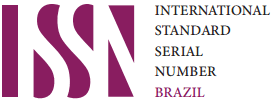La gestión de las emergencias psiquiátricas en situaciones de calamidad pública
DOI:
https://doi.org/10.25118/2763-9037.2024.v14.1239Palabras clave:
humanos, pandemias, emergencias psiquiátricas, brotes, salud mental, epidemias, calamidad públicaResumen
La prevalencia de problemas de salud mental en la población general durante una calamidad pública es alta. En las calamidades, el número de pacientes que presentan brotes o crisis de trastornos mentales puede aumentar, pero los sistemas de apoyo necesarios para ayudarlos pueden verse afectados si no se han planificado para ello. Aunque existen varios modelos para abordar las emergencias psiquiátricas, las reglas generales son las mismas, especialmente cuando se trata de hacer que estos servicios estén fácilmente disponibles para la población afectada. En este artículo buscamos revisar y presentar recomendaciones para el manejo de emergencias psiquiátricas en situaciones de calamidades públicas, incluidos desastres, catástrofes físicas y médicas, epidemias y pandemias.
Descargas
Métricas
Citas
Kipnis K, Shander A. The taxonomy of calamity: the view from the operating room. Int Anesthesiol Clin. 2015;53:79–89. https://doi.org/10.1097/AIA.0000000000000069 - PMid:26057904
Correa H, Malloy-Diniz LF, Silva AG. Why psychiatric treatment must not be neglected during the COVID-19 pandemic. Braz J Psychiatry. 2020;42:449. https://doi.org/10.1590/1516-4446-2020-0995 - PMid:32374799 PMCid:PMC7430377
Silva AG, Miranda DM, Diaz AP, Teles ALS, Malloy-Diniz LF, Palha AP. Mental health: why it still matters in the midst of a pandemic. Braz J Psychiatry. 2020;42:229–31. https://doi.org/10.1590/1516-4446-2020-0009 - PMid:32267344 PMCid:PMC7236155
Li W, Yang Y, Liu ZH, Zhao YJ, Zhang Q, Zhang L, Cheung T, Xiang Y-T. Progression of mental health services during the COVID-19 outbreak in China. Int J Biol Sci. 2020;16:1732–8. https://doi.org/10.7150/ijbs.45120 - PMid:32226291 PMCid:PMC7098037
Gomez JM, Verdu M. Network theory may explain the vulnerability of medieval human settlements to the Black Death pandemic. Sci Rep. 2017;7:43467. https://doi.org/10.1038/srep43467 PMid:28262733 - PMCid:PMC5338018
Udomratn P. Mental health and the psychosocial consequences of natural disasters in Asia. Int Rev Psychiatry. 2008;20:441–4. https://doi.org/10.1080/09540260802397487 - PMid:19012129
Math SB, Nirmala MC, Moirangthem S, Kumar NC. Disaster management: mental health perspective. Indian J Psychol Med. 2015;37:261–71. https://doi.org/10.4103/0253-7176.162915 PMid:26664073 - PMCid:PMC4649821
Miranda DM, Reis ZSN, Romano-Silva MA, Malloy-Diniz LF, Silva AG. Expectations when you are expecting in times of COVID-19. Braz J Psychiatry. 2020;1–2. https://doi.org/10.1590/1516-4446-2020-1209 - PMid:32997077 - PMCid:PMC8352730
Makwana N. Disaster and its impact on mental health: a narrative review. J Family Med Prim Care. 2019;8:3090–5. https://doi.org/10.4103/jfmpc.jfmpc_893_19 - PMid:31742125 PMCid:PMC6857396
Baldaçara L. Abordagem dos transtornos mentais em calamidades públicas. In: Baldaçara L, Tung TC, editores. Condutas em Psiquiatria. Rio de Janeiro: Manole; 2020.
Katz CL, Pellegrino L, Pandya A, Ng A, Delisi LE. Research on psychiatric outcomes and interventions subsequent to disasters: a review of the literature. Psychiatry Res. 2002;110:201–17. https://doi.org/10.1016/S0165-1781(02)00110-5 - PMid:12127471
Cosic K, Popovic S, Sarlija M, Kesedzic I. Impact of human disasters and COVID-19 pandemic on mental health: potential of digital psychiatry. Psychiatr Danub. 2020;32:25–31. https://doi.org/10.24869/psyd.2020.25 - PMid:32303026
Baldaçara L, Ismael F, Leite V, Pereira LA, Santos RM, Gomes Junior VP, Calfat ELB, Diaz AP, Périco CAM, Porto DM, Zacharias CE, Cordeiro Q, Silva AG, Tung TC. Brazilian guidelines for the management of psychomotor agitation. Part 1. Non-pharmacological approach. Braz J Psychiatry. 2019;41:153–67. https://doi.org/10.1590/1516-4446-2018-0163 - PMid:30540028 PMCid:PMC6781680
Silva AG, Baldaçara L, Cavalcante DA, Fasanella NA, Palha AP. The impact of mental illness stigma on psychiatric emergencies. Front Psychiatry. 2020;11:573. https://doi.org/10.3389/fpsyt.2020.00573 - PMid:32636773 PMCid:PMC7319091
Ho CS, Chee CY, Ho RC. Mental health strategies to combat the psychological impact of COVID-19 beyond paranoia and panic. Ann Acad Med Singapore. 2020;49:155–60. https://doi.org/10.47102/annals-acadmedsg.202043 PMid:32200399
Raphael B, Ma H. Mass catastrophe and disaster psychiatry. Mol Psychiatry. 2011;16:247–51. https://doi.org/10.1038/mp.2010.68 PMid:21331093
Shoaf K. Organizing the health sector for response to disasters. Ciênc. Saúde Coletiva. 2014;19:3705–15. https://doi.org/10.1590/1413-81232014199.03722014 PMid:25184577
Silva AG, Pinheiro M, Tres LM, Malloy-Diniz LF. Working during pandemics: the need for mental health efforts to prevent the outbreak of mental disorders at the workplace. Braz J Psychiatry. 2021;43:1. https://doi.org/10.1590/1516-4446-2020-1120 PMid:32876130 - PMCid:PMC7861174
Associação Brasileira de Psiquiatria (ABP), Associação Médica Brasileira (AMB), Conselho Federal de Medicina (CFM), Federação Nacional de Médicos (FENAM), Sociedade Brasileira de Neuropsicologia (SBNp). Diretrizes para um modelo de atenção integral em saúde mental no Brasil = Guidelines for a model of comprehensive mental health care in Brazil. Publicações ABP documentos e vídeos = ABP Publications documents and videos, Rio de Janeiro. 2020. https://doi.org/10.25118/issn.2965-1832.2024.1190
King RV, Burkle FMJr, Walsh LE, North CS. Competencies for disaster mental health. Curr Psychiatry Rep. 2015;17:548. https://doi.org/10.1007/s11920-015-0548-2 - PMid:25681279
Baldaçara L, Cordeiro DC, Calfat ELB, Cordeiro DC, Chung TC. Emergências psiquiátricas. Rio de Janeiro: Elsevier; 2019.
Baldaçara L, Pereira LA, Cordeiro Q, Tung TC. Medicina psiquiátrica de emergência. In: Meleiro AMAS, editor. Psiquiatria: estudos fundamentais. Rio de Janeiro: Guanabara Koogan; 2019. p. 999–1020.
Schleifer JJ. Management of acute agitation in psychosis: an evidencebased approach in the USA. Adv Psychiatr Treat. 2011;17:91–100. https://doi.org/10.1192/apt.bp.109.007310
Garriga M, Pacchiarotti I, Kasper S, Zeller SL, Allen MH, Vazquez G, Baldaçara L, San l, McAllister-Williams RH, Fountoulakis KN, Courtet P, Naber D,Chan EW, Fagiolini A, Möller HJ, Grunze H, Llorca PM, Jaffe RL, Yatham LN, Hidalgo-Mazzei D, Passamar M, Messer T, Bernardo M, Vieta E. Assessment and management of agitation in psychiatry: expert consensus. World J Biol Psychiatry. 2016;17:86–128. https://doi.org/10.3109/15622975.2015.1132007 PMid:26912127
Wa Health. The management of disturbed/violent behaviour in inpatient psychiatric settings. M. H. Division. WA: Department of Health; 2006.
Kawakami D, Prates JG, Tung TC. Propostas para o futuro: estrutura física e equipe ideal nas emergências psiquiátricas. Debates em Psiquiatria. 2016;6(4):28–34. https://doi.org/10.25118/2236-918X-6-4-3
Marder SR. A review of agitation in mental illness: treatment guidelines and current therapies. J Clin Psychiatry. 2006; 67(Suppl. 10):13–21. https://doi.org/10.4088/JCP.0706e03
Richmond JS, Berlin JS, Fishkind AB, Holloman GHJr, Zeller SL, Wilson MP, Rifai MA, Ng AT. Verbal de-escalation of the agitated patient: consensus statement of the american association for emergency psychiatry project BETA De-Escalation Workgroup. West J Emerg Med. 2012;13:17–25. https://doi.org/10.5811/westjem.2011.9.6864
Caldieraro MA, Spode A, Fleck MPA. Avaliação do paciente na emergência. In: Quevedo J, Schimitt R, Kapczinski F, editores. Emergências Psiquiátricas. Porto Alegre: Artmed; 2008. p. 17–48.
Baldaçara L, Diaz AP, Leite V, Pereira LA, Santos RM, Gomes Junior VP, Calfat ELB, Ismael F, Périco CAM, Porto DM, Zacharias CEK, Cordeiro Q, Silva AG, Tung TC. Brazilian guidelines for the management of psychomotor agitation. Part 2. Pharmacological approach. Braz J Psychiatry. 2019;41:324–35. https://doi.org/10.1590/1516-4446-2018-0177
O’Brien L, Cole R. Close-observation areas in acute psychiatric units: a literature review. Int J Ment Health Nurs. 2003;12:165–76. https://doi.org/10.1046/j.1440-0979.2003.t01-1-00286.x
Vaaler AE, Morken G, Flovig JC, Iversen VC, Linaker OM. Effects of a psychiatric intensive care unit in an acute psychiatric department. Nord J Psychiatry. 2006;60:144–9. https://doi.org/10.1080/08039480600583472
Niel M. Atitudes na entrevista psiquiátrica. In: Cordeiro DC, Baldacara L, editores. Emergências psiquiátricas. São Paulo: Roca; 2007. p. 11–18.
Torales J, O’Higgins M, Castaldelli-Maia JM, Ventriglio A. The outbreak of COVID-19 coronavirus and its impact on global mental health. Int J Soc Psychiatry. 2020;66:317–20. https://doi.org/10.1177/0020764020915212
Lee SM, Kang WS, Cho A-R, Kim T, Park JK. Psychological impact of the 2015 MERS outbreak on hospital workers and quarantined hemodialysis patients. Compr Psychiatry. 2018; 87:123–7. https://doi.org/10.1016/j.comppsych.2018.10.003
Kang L, Li Y, Hu S, Chen M, Yang C, Yang BX, Wang Y, Hu J, Lai J, Ma X, Chen J, Guan L, Wang G, Ma H, Zhongchun L. The mental health of medical workers in Wuhan, China dealing with the 2019 novel coronavirus. Lancet Psychiatry. 2020;7:e14. https://doi.org/10.1016/S2215-0366(20)30047-X
Jones NM, Thompson RR, Dunkel Schetter C, Silver RC. Distress and rumor exposure on social media during a campus lockdown. Proc Natl Acad Sci USA. 2017;114:11663–8. https://doi.org/10.1073/pnas.1708518114
Baldaçara L, Grudtner RR, Leite VS, Porto DM, Robis KP, Fidalgo TM, Rocha GA, Diaz AP, Meleiro A, Correa H, Tung TC, Malloy-Diniz LF, Quevedo J, Silva AG. Brazilian Psychiatric Association guidelines for the management of suicidal behavior. Part 2. Screening, intervention, and prevention. Br J Psychiatry. 2020;43(5) https://doi.org/10.1590/1516-4446-2020-1108
Baldaçara L, Rocha G, Leite V, Porto D, Grudtner R, Díaz AP, Meleiro A, Correa H, Tung TC, Quevedo J, Silva AG. Brazilian Psychiatric Association guidelines for the management of suicidal behavior. Part 1. Risk factors, protective factors, and assessment. Braz J Psychiatry. 2020;43(5) https://doi.org/10.1590/1516-4446-2020-0994
Ryes G, Elhai JD. Psychosocial interventions in the early phases of disasters. Psychother Theory Res Pract Train. 2004;41:399–411. https://doi.org/10.1037/0033-3204.41.4.399
Tzur Bitan D, Otmazgin A, Shani Sela M, Segev A. The role of entrapment in crisis-focused psychotherapy delivered in psychiatric emergency settings: a comparative study. Front Psychol. 2019;10:2600. https://doi.org/10.3389/fpsyg.2019.02600
Ruzek JI, Young BH, Cordova MJ, Flynn BW. Integration of disaster mental health services with emergency medicine. Prehosp Disaster Med. 2004;19:46–53. https://doi.org/10.1017/S1049023X00001473
Inouye SK, Westendorp RG, Saczynski JS. Delirium in elderly people. Lancet. 2014;383:911–22. https://doi.org/10.1016/S0140-6736(13)60688-1
Cerveira CCT, Pupo CC, Santos SDSD, Santos JEM. Delirium in the elderly: a systematic review of pharmacological and nonpharmacological treatments. Dement Neuropsychol. 2017;11:270–5. https://doi.org/10.1590/1980-57642016dn11-030009
Steinberg M, Lyketsos CG. Atypical antipsychotic use in patients with dementia: managing safety concerns. Am J Psychiatry. 2012;169:900–6. https://doi.org/10.1176/appi.ajp.2012.12030342
Knox DK, Holloman GHJr. Use and avoidance of seclusion and restraint: consensus statement of the American Association for Emergency Psychiatry Project Beta Seclusion and Restraint Workgroup. West J Emerg Med. 2012;13:35–40. https://doi.org/10.5811/westjem.2011.9.6867
Rossler W. Stress, burnout, and job dissatisfaction in mental health workers. Eur Arch Psychiatry Clin Neurosci. 2012;262(Suppl. 2):S65–9. https://doi.org/10.1007/s00406-012-0353-4
Alves VM, Francisco LC, Melo AR, Novaes CR, Belo FM, Nardi AE. Trends in suicide attempts at an emergency department. Braz J Psychiatry. 2017;39(1):55–61. https://doi.org/10.1590/1516-4446-2015-1833
Bachmann S. Epidemiology of suicide and the psychiatric perspective. Int J Environ Res Public Health. 2018;15:1425. https://doi.org/10.3390/ijerph15071425
Conejero I, Berrouiguet S, Ducasse D, Leboyer M, Jardon V, Olie E, Courtet P. Épidémie de COVID-19 et prise en charge des conduites suicidaires: challenge et perspectives = Suicidal behavior in light of COVID-19 outbreak: clinical challenges and treatment perspectives. Encephale. 2020; 46:S66–72. https://doi.org/10.1016/j.encep.2020.05.001
Boudreaux ED, Miller I, Goldstein AB, Sullivan AF, Allen MH, Manton AP, Arias SA, Camargo Jr CA. The Emergency Department Safety Assessment and Follow-up Evaluation (ED-SAFE): method and design considerations. Contemp Clin Trials. 2013;36(1):14–24. https://doi.org/10.1016/j.cct.2013.05.008
Dunlap LJ, Orme S, Zarkin GA, Arias SA, Miller IW, Camargo CA Jr, Sullivan AF, Allen MH, Goldstein AB, Manton AP, Clark R, Boudreaux ED. Screening and intervention for suicide prevention: a cost-effectiveness analysis of the ED-SAFE interventions. Psychiatr Serv. 2019;70:1082–7. https://doi.org/10.1176/appi.ps.201800445
Mullinax S, Chalmers CE, Brennan J, Vilke GM, Nordstrom K, Wilson MP. Suicide screening scales may not adequately predict disposition of suicidal patients from the emergency department. Am J Emerg Med. 2018;36:1779–83. https://doi.org/10.1016/j.ajem.2018.01.087
Weber AN, Michail M, Thompson A, Fiedorowicz JG. Psychiatric emergencies: assessing and managing suicidal ideation. Med Clin North Am. 2017;101:553–71. https://doi.org/10.1016/j.mcna.2016.12.006
Reger MA, Stanley IH, Joiner TE. Suicide mortality and coronavirus disease 2019-a perfect storm? JAMA Psychiatry. 2020; 77(11):1093-1094. https://doi.org/10.1001/jamapsychiatry.2020.1060
Fonseca L, Diniz E, Mendonça G, Malinowski F, Mari J, Gadelha A. Schizophrenia and COVID-19: risks and recommendations. Braz J Psychiatry. 2020;42:236–8. https://doi.org/10.1590/1516-4446-2020-0010
Yatham LN, Kennedy SH, Parikh SV, Schaffer A, Bond DJ, Frey BN, Sharma V, Goldstein BI, Rej S, Beaulieu S, Alda M, MacQueen G, Milev RV, Ravindran A, O'Donovan C, McIntosh D, Lam RW, Vazquez G, Kapczinski F, McIntyre RS, Kozicky J, Kanba S, Lafer B, Suppes T, Calabrese JR, Vieta E, Malhi G, Post RM, Berk M. Canadian Network for Mood and Anxiety Treatments (CANMAT) and International Society for Bipolar Disorders (ISBD) 2018 guidelines for the management of patients with bipolar disorder. Bipolar Disord. 2018;20:97–170. https://doi.org/10.1111/bdi.12609
Huremovic D. Psychiatry of pandemics: a mental health response to infection outbreak. Rio de Janeiro: Springer Nature Switzerland; 2019.
Schaffer A, Mcintosh D, Goldstein BI, Rector NA, Mcintyre RS, Beaulieu S, Swinson R, Yatham LN, Canadian Network for Mood and Anxiety Treatments (CANMAT) Task Force. The CANMAT task force recommendations for the management of patients with mood disorders and comorbid anxiety disorders. Ann Clin Psychiatry. 2012;24(1):6–22. PMID: 22303519
Nice. Dementia: assessment, management and support for people living with dementia and their carers. 2020. Disponível em: https://www.nice.org.uk/guidance/ng97
American Psychiatric Association. The American Psychiatric Association Practice Guideline for the treatment of patients with schizophrenia / Guideline Writing Group, Systematic Review Group, Committee on Practice Guidelines. Washington, DC: American Psychiatric Association; 2021.

Publicado
Cómo citar
Número
Sección
Licencia
Derechos de autor 2024 Leonardo Baldaçara, Antônio Geraldo da Silva, Lucas Alves Pereira, Leandro Fernandes Malloy-Diniz, Teng Chei Tung

Esta obra está bajo una licencia internacional Creative Commons Atribución-NoComercial 4.0.
Debates em Psiquiatria permite que el (los) autor (es) mantenga(n) sus derechos de autor sin restricciones. Permite al (los) autor (es) conservar sus derechos de publicación sin restricciones. Los autores deben garantizar que el artículo es un trabajo original sin fabricación, fraude o plagio; no infringe ningún derecho de autor o derecho de propiedad de terceros. Los autores también deben garantizar que cada uno atendió a los requisitos de autoría conforme a la recomendación del ICMJE y entienden que, si el artículo o parte de él es fallido o fraudulento, cada autor comparte la responsabilidad.
Reconocimiento-NoComercial 4.0 internacional (CC BY-NC 4.0) - Debates em Psiquiatria es regida por la licencia CC-BY-NC
Usted es libre de:
- Compartir — copiar y redistribuir el material en cualquier medio o formato
- Adaptar — remezclar, transformar y crear a partir del material
El licenciador no puede revocar estas libertades mientras cumpla con los términos de la licencia. Bajo las condiciones siguientes:
- Reconocimiento — Debe reconocer adecuadamente la autoría, proporcionar un enlace a la licencia e indicar si se han realizado cambios<. Puede hacerlo de cualquier manera razonable, pero no de una manera que sugiera que tiene el apoyo del licenciador o lo recibe por el uso que hace.
- NoComercial — No puede utilizar el material para una finalidad comercial.
No hay restricciones adicionales — No puede aplicar términos legales o medidas tecnológicas que legalmente restrinjan realizar aquello que la licencia permite.





























